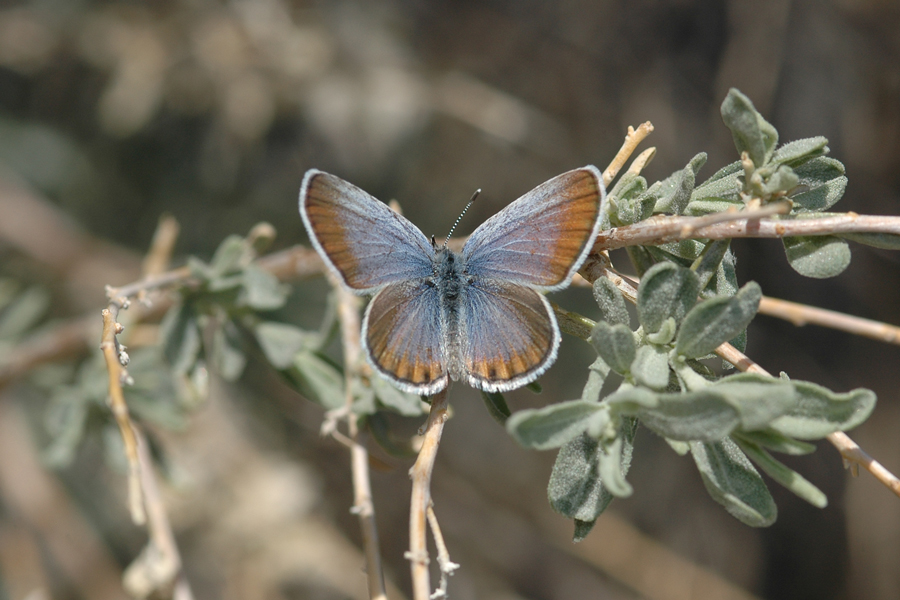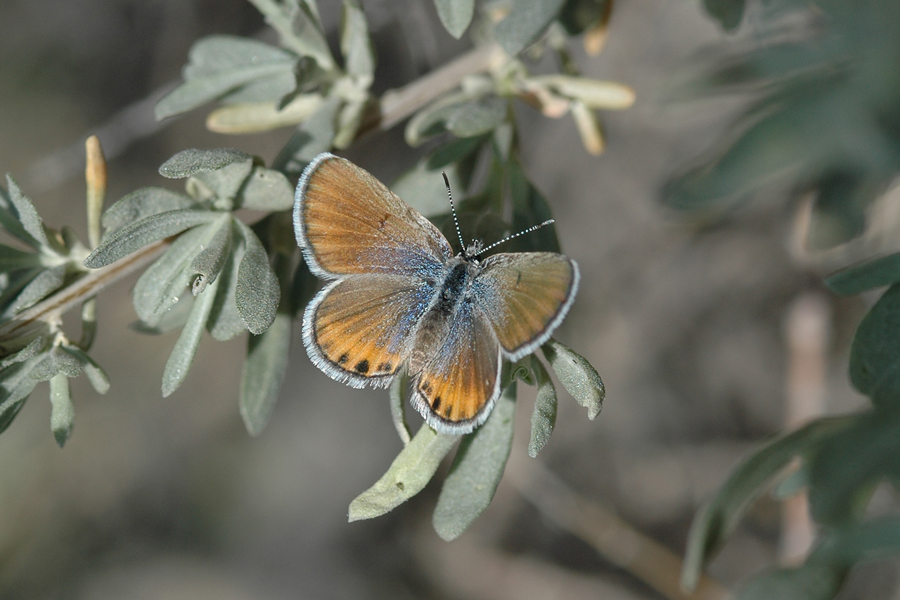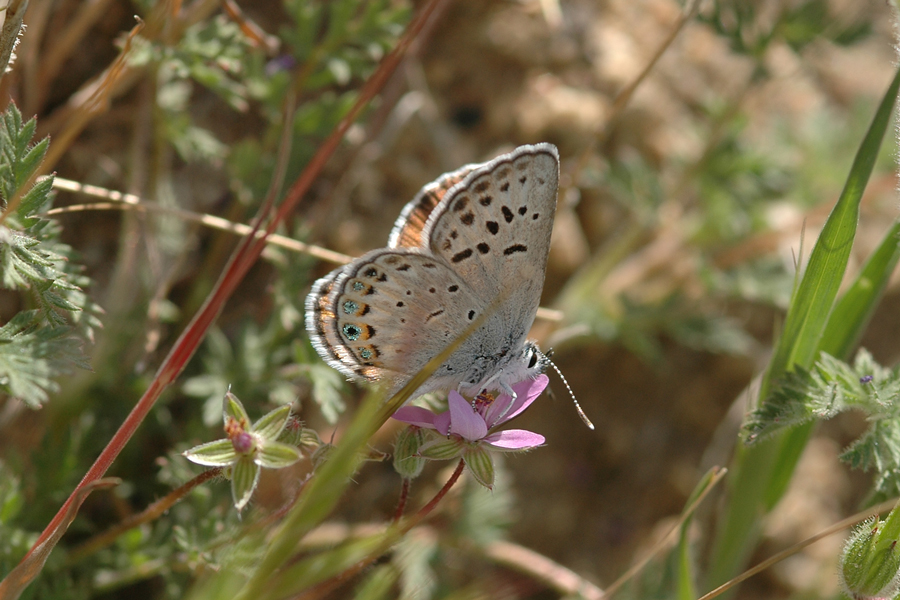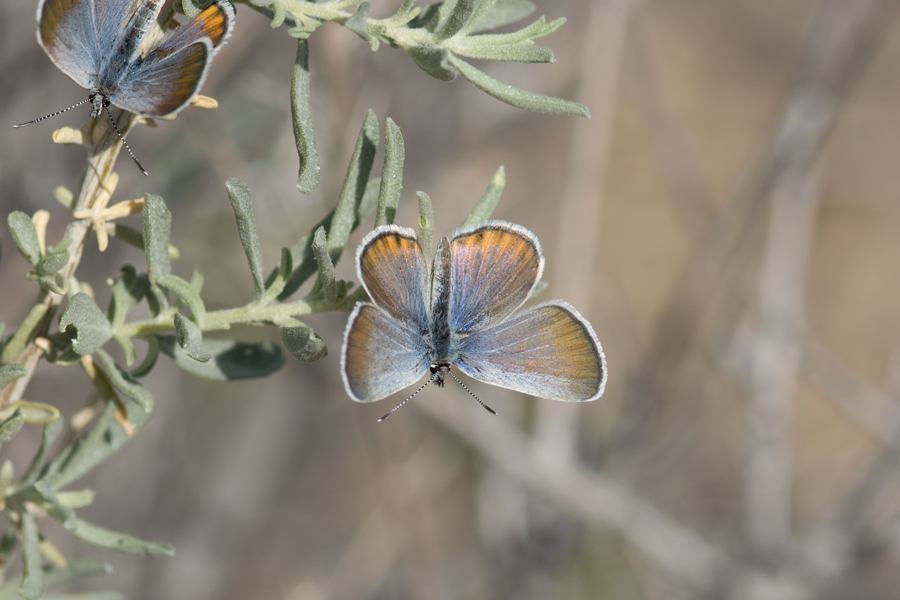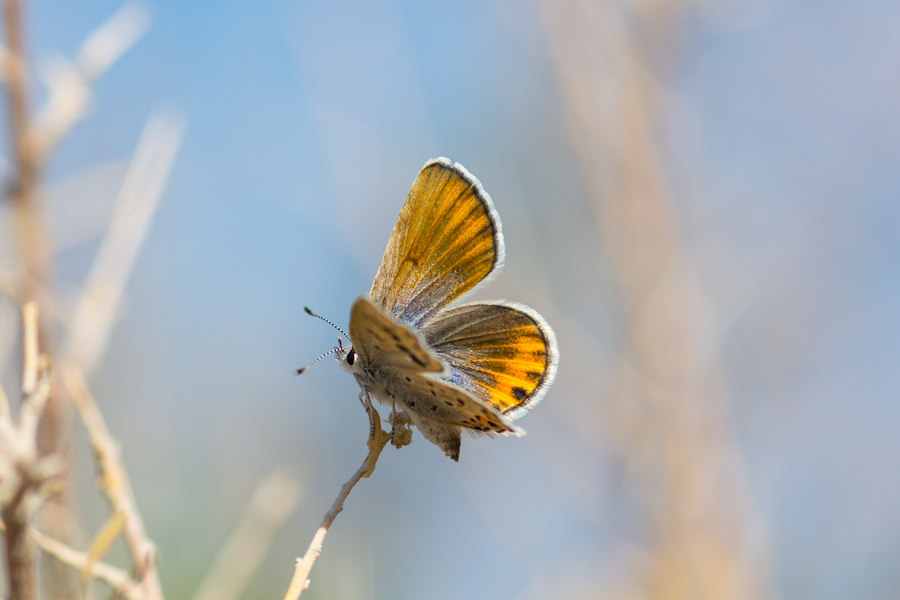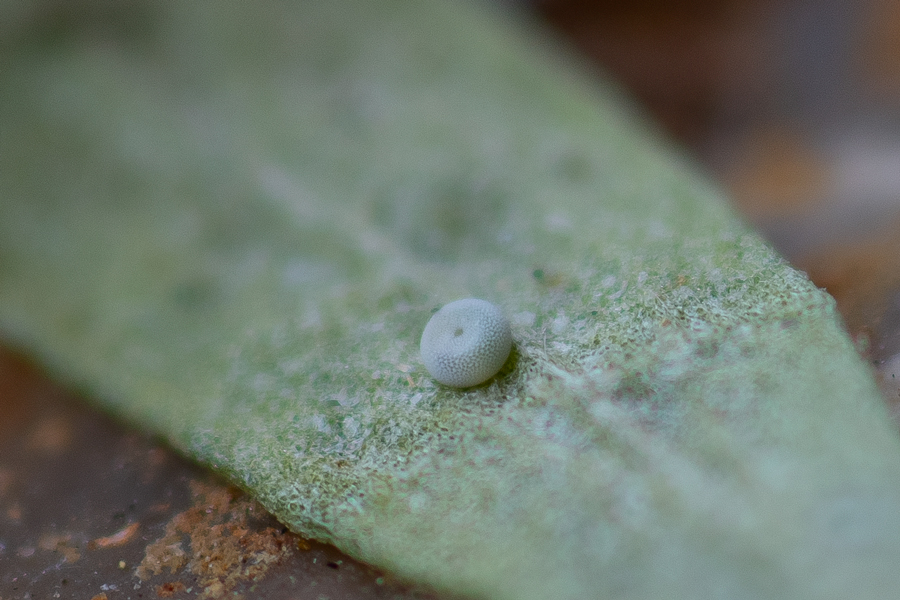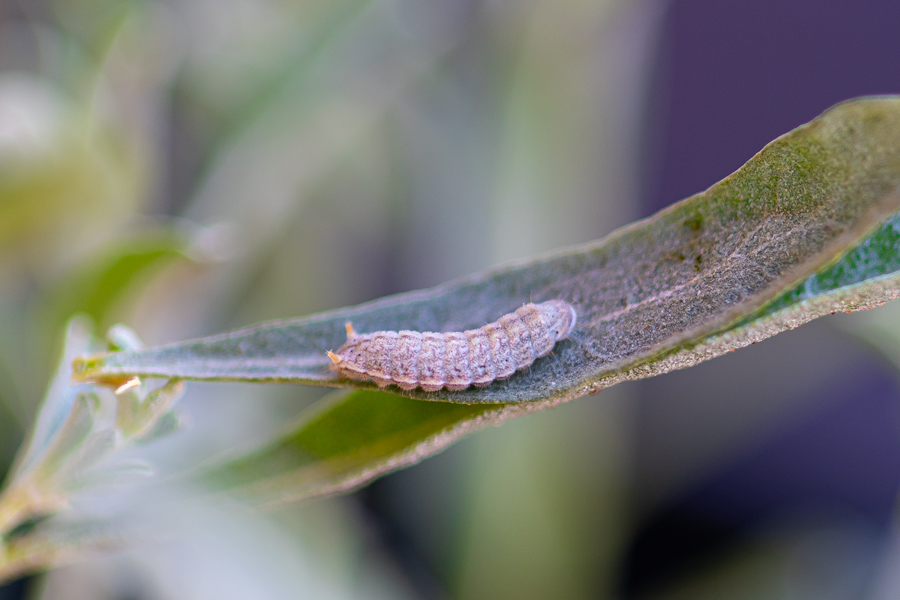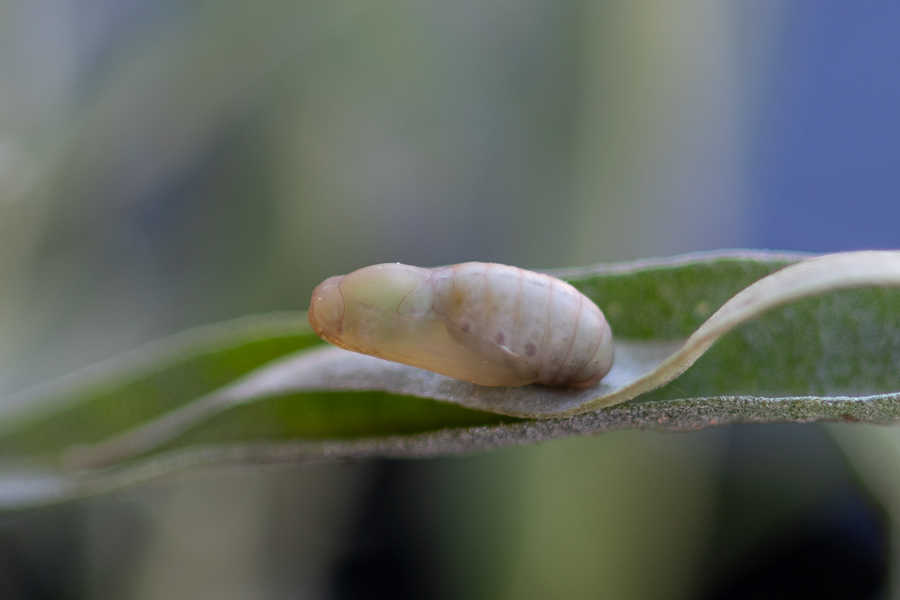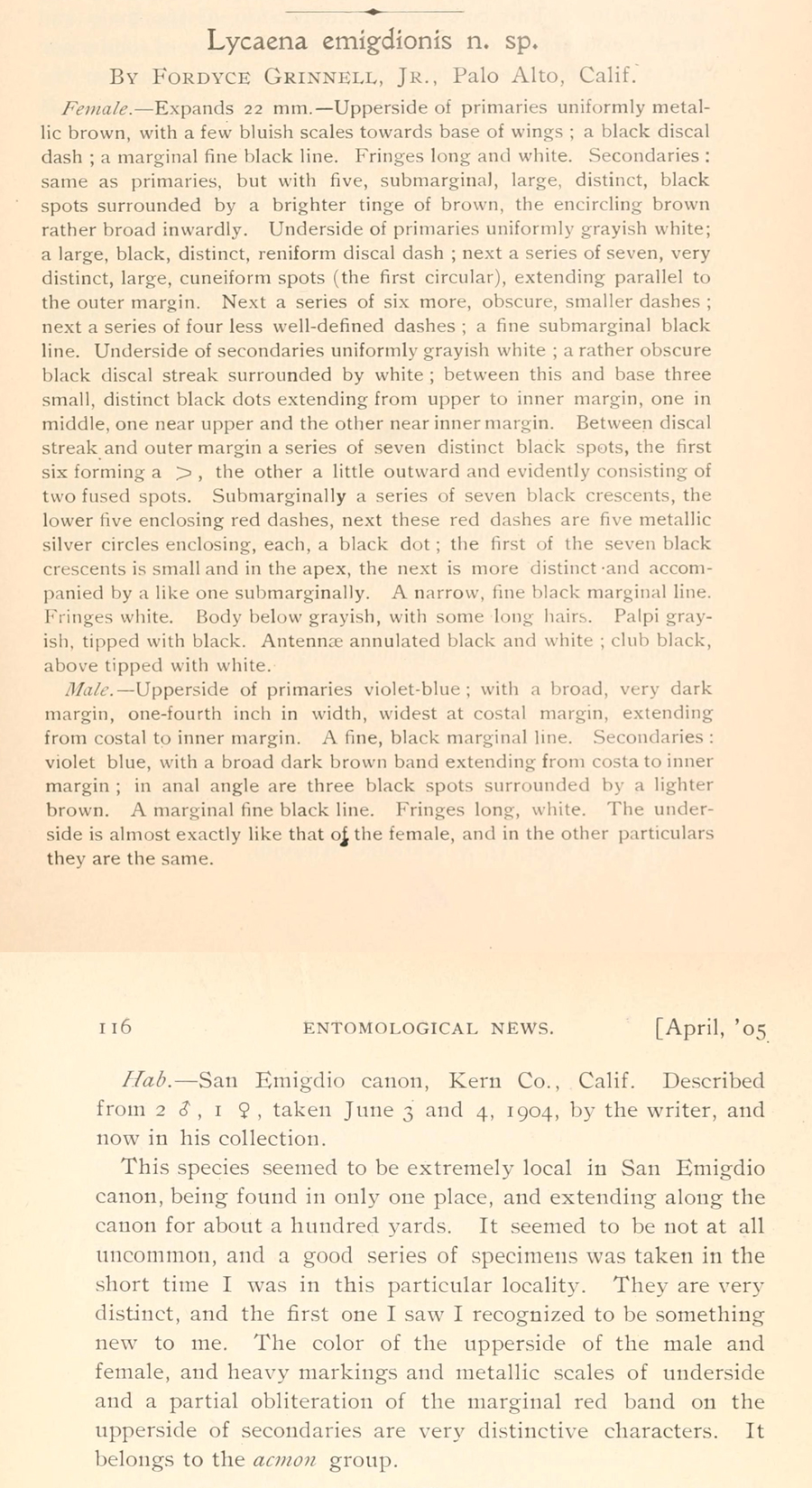Plebulina emigdionis
San Emigdio Blue
The San Emigdio blue flies in small colonies despite having an abundant source of larval food plants*. The main plant is the common Atriplex canescens (hoary or four winged saltbush), but it also uses Atriplex torreyi and A. polycarpa. Caterpillars are ant attended, and the presence of Formica francouri seems to be crucial for the presence of the butterfly, quite possibly as a stimulant to oviposition. The presence of certain scale insects and aphids, which also produce fluid treats for the ants, may also be important, and perhaps what keeps the ants present at the saltbushes. If the female butterflies are picking up stimulatory signals from the ants, and not just the plants as would be expected, and if the ants are generally only interested in saltbushes where the scale insects and aphids are, then this helps us understand why there are so many places where saltbush thrives, yet there are only small, scattered colonies of San Emigdio blues around the western Mojave desert. Basically, suitable habitat would be where the ant's distribution overlaps the distribution of the right saltbushes, especially those with certain aphids and scale insects. Such ideal - or necessary - conditions are relatively rare and have a habit of disappearing thanks to human development.
* For much more detail of the life history, habitat, and distribution, see Greg Ballmer's recent paper from 2022, "Life history and ecology of the San Emigdio blue butterfly (Lepidoptera: Lycaenidae)", The Taxonomic Report of the International Lepidoptera Survey 10(9), available online. I've drawn a lot from it for this brief account.
